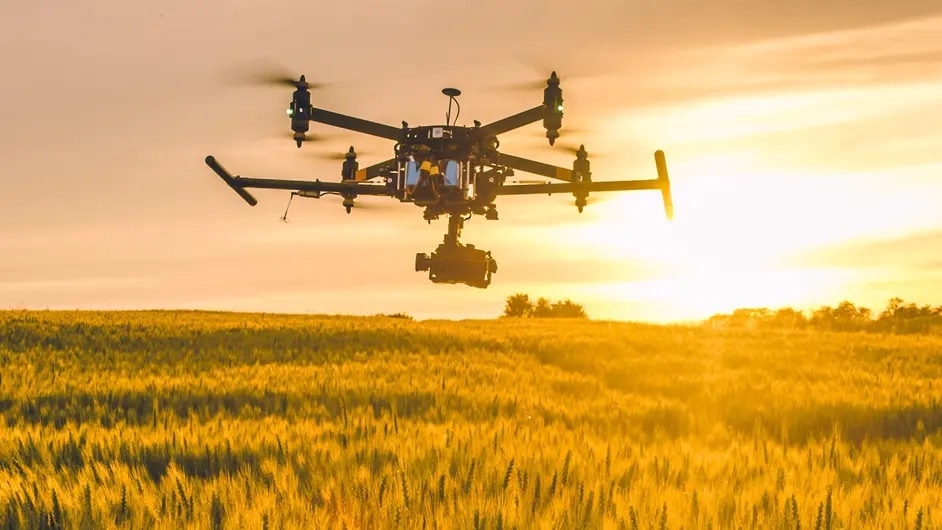Now it is time for drones to connect to mobile networks

We have all heard of package delivery drones that can pick up an order at a warehouse and drop it off at a doorstep. But package delivery is just one of the myriad use cases for commercial drones. Drones could be used to tend crops on farms. They could zip up and down the country’s energy grids, inspecting power lines and other infrastructure for problems. They could even fly transplanted human organs from one hospital to another, helping to save lives.
One of the major obstacles to these new types of drone applications, however, is requirements for visual line of sight (VLOS). Regulations in most countries dictate today that drone operators must be able to see the drones they control, which is a clear limitation for many of these use cases. Imagine for instance using a drone to inspect 50 km of power lines. A camera drone obviously brings great benefits, allowing close-up examination of infrastructure high up in the air. But if the operator needs to see the drone, that means they will need to be driving or walking next to the power lines for the entire 50 km inspection, removing much of the benefit.
That VLOS requirement is one of the main reasons nearly all commercial drones are connected to their controllers using Wi-Fi based technologies and unlicensed frequencies. Connecting these drones to LTE or 5G, however would provide great benefits:
- As cellular networks are available almost everywhere, drones could fly almost everywhere.
- Cellular networks provide high levels of reliability.
- Standard LTE and 5G networks have embedded solutions providing high levels of security.
There are several encouraging signs that 4G and 5G drones are right around the corner. The first item of good news is regulators worldwide are currently working to remove VLOS requirements and allow for beyond visual line of sight (BVLOS), which would permit operators to control their drones from any location. This opens up a tremendous opportunity to connect any manner of drone to 4G and 5G networks. The second item of good news is that cellular networks are already well equipped to handle the reliability requirements of drone applications, and new enhancements in 3GPP standards will only improve their effectiveness.
Today, cellular networks are capable of providing good command-and-control link reliability for drones flying in the very low-level airspace. In our tests with two cellular operators, we have found their LTE networks can support reliabilities between 88.5 percent and 98.5 percent when connecting to airborne drones. With a simple redundancy enhancement called “dual network”, which introduces packet duplication, we can hit 99.9 percent reliability by connecting to two networks simultaneously. This packet duplication can also be achieved over a single network through standard techniques available in 5G New Radio specifications, where packets are transmitted simultaneously to and from different cells within the same cellular network.
Another problem we are quickly overcoming is the issue of drone interference. Applications on drone platforms, like video cameras used for power-line inspection, generate a lot of real-time data that needs to be streamed, leading to high uplink data rates in the cellular network. This constant data stream, combined with the fact that an airborne drone transceiver device can see many more base stations than a terrestrial device, causes significant uplink interference to other users in the system. Extensive measurements have shown that a drone flying at an altitude of 100 m causes approximately four times more interference than a terrestrial user device on the ground.

A solution to this problem is illustrated in the figure above. In this example, there is a large group of people gathered at an event, such as a concert or a sports match. These terrestrial users are uploading pictures from the event while an airborne camera drone live-streams the event from above. If the drone were using an omnidirectional antenna, it would interfere with the two base stations connected to the users on the ground, thereby interfering with their upload traffic. However, using a directional transmission, as shown in the figure, the drone forms a beam pointing to a base station further away from the event. This will allot radio resources to the streaming drone and at the same time avoid interfering with the terrestrial user devices. This enhancement can be introduced independent of the standard, but 3GPP will likely codify these drone resource-management techniques in release 18 specifications for 5G networks.
We have explored all of these potential drone use cases and how 4G and 5G networks will enable them in a recently published white paper titled “Controlling drones over cellular networks”. In it you will find descriptions of how cellular networks can provide reliable connectivity to drones, while simultaneously supporting high-throughput applications, as well as details on how drone solutions can be offered as a service over 5G.
Nokia believes strongly that cellular networks will have a crucial role to play in enabling countless new drone applications. 4G and 5G drones will be key to the critical networks of the future, helping our customers capture the new value of the cloud and take advantage of new business models. In addition to taking a leading role in the standards work that will make BVLOS drones a reality, Nokia is actively engaged with the industry to help develop the drone technologies of the future. For example, Nokia recently partnered with MITRE Engenuity to help form the Open Generation Consortium with the aim of exploring new 5G drone use cases in the US.
Cellular networks today already can provide secure and reliable connectivity for drones, but future 3GPP enhancements will make those connections more reliable and allow drone applications to scale further. That means once the regulator landscape changes, our 4G and 5G networks will be ready to take on their new role connecting the drones that fly through the skies.




